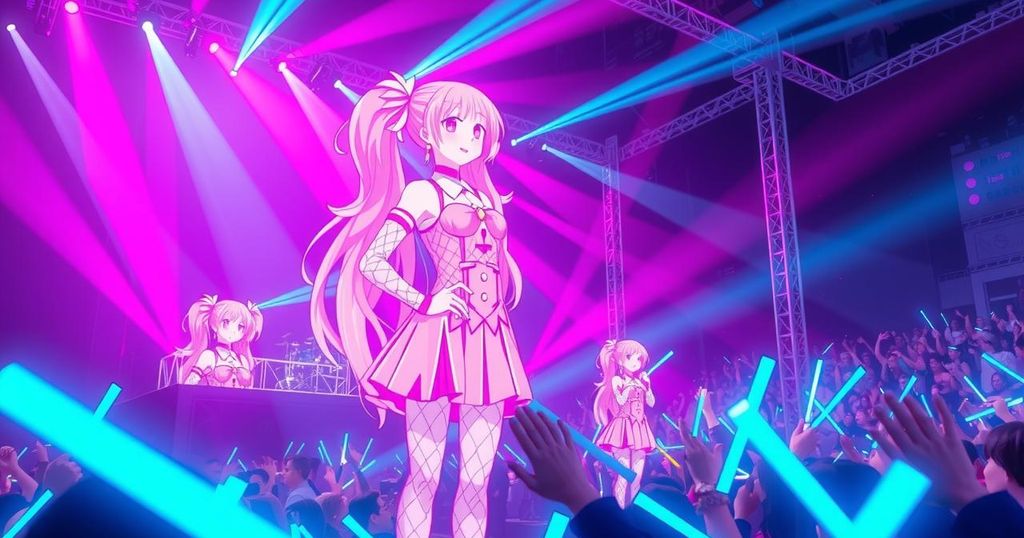Can Japan’s VTuber Wave Make an Impact in America?

Japan’s VTuber craze is expanding globally, with a successful concert in Hollywood that demonstrated the potential for U.S. market penetration. VTubers like Mori Calliope combine digital performance with real-time audience engagement, aiming for $4 billion in annual revenue by 2030. However, competition from South Korean entertainers and the balance between digital personas and human connections could shape their success.
Japan’s VTuber subculture is showcasing its global aspirations, highlighted by a sold-out concert in Hollywood where fans waved glow sticks for their animated idol, Mori Calliope. This pink-haired musician, embodying an anime character through a hologram-like performance, represents the country’s desire to export this digital phenomenon internationally. Calliope’s Tokyo agency aims to leverage platforms like Netflix, which has made anime mainstream, to further the reach of virtual YouTubers.
Calliope, who has over 2.5 million subscribers, noted a shift in potential US market success, sharing how fans connect to VTubers through their anime aesthetics. The interaction is enhanced by motion capture technology, allowing fans to engage directly with characters during live streams. With nearly half of Cover Corp’s hololive VTubers communicating in English, the agency has opened a US office to accelerate expansion in North America, capitalizing on the projected growth of the VTuber market forecasted to reach nearly $4 billion by 2030.
Despite Japan’s dominance in the VTuber sphere, the South Korean entertainment industry poses a challenge, according to Cover Corp’s CEO, Motoaki Tanigo. While K-pop idols benefit from rigorous training and polish, Japanese VTubers gain fandom through their organic development, appealing to different audience expectations. Competition is anticipated as South Korean VTuber producers could quickly ramp up in the lucrative US market.
While VTubers thrive in a digital landscape, maintaining the human element is crucial. Tanigo emphasized they won’t use AI-generated characters, stressing that audiences support real talent and personalities behind avatars. Fans like Ian Goff appreciate the authenticity offered by VTubers, believing that while AI can create characters, it lacks the human connection that defines VTubers.
The industry needs to be wary of the demand for continuous livestreaming, as it can lead to overexertion among VTubers. Media studies professor Takeshi Okamoto highlighted this risk, but he remains optimistic about the potential of virtual interaction in the era of the Metaverse. The future could see a seamless blend of everyday life and VTuber culture, facilitating further growth and acceptance of this digital phenomenon.
Japan’s virtual YouTuber scene, led by characters like Mori Calliope, is poised for significant growth, particularly in the American market. While facing potential competition from South Korea’s polished performers, Japanese VTubers draw fans through authenticity and engagement. The balance of digital artistry with human connection will be vital for sustaining their cultural impact and expansion in international territories. As the VTuber industry evolves, so too might the dynamics of viewer interaction and entertainment.
Original Source: www.bellevueheraldleader.com






